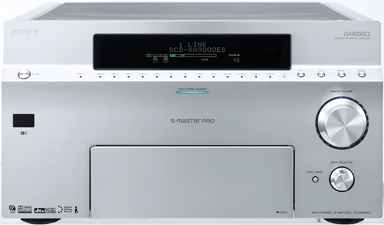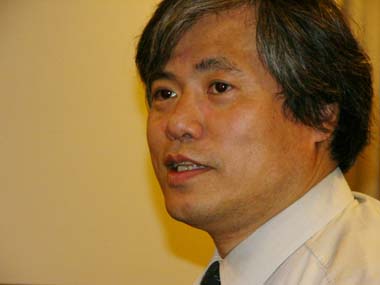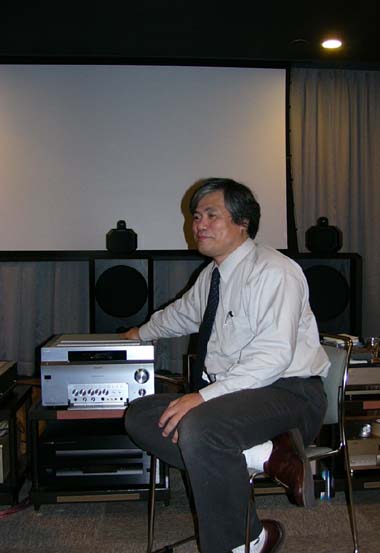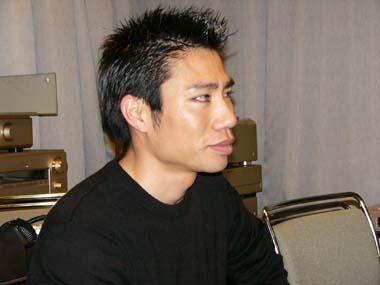@Sonywalkmanuser have you read this? We have no idea how lucky we are to experience the walkman, especially its amplification. It is truly a product of tears, love endless hard work.
https://www.soundandvision.com/content/mad-scientist-sony-audio

A 3 part interview with Mr. Takashi Kanai back in 2004:
https://www.itmedia.co.jp/lifestyle/articles/0404/30/news026.html
https://www.itmedia.co.jp/lifestyle/articles/0404/30/news026_2.html
https://www.itmedia.co.jp/lifestyle/articles/0404/30/news026_3.html
Sound quality is something you create
This time, we interviewed Mr. Takashi Kanai, Senior Electrical Engineer, Product Design Section 1, AV Entertainment Department, Component Audio Division, Sony Home Audio Company, and Mr. Matsumura, Senior Electrical Engineer, Product Design Section 1, Product Design Department, Sony EMCS Kisarazu TECHAV Business Department. This is Mr. Shigeo.
Mr. Kanai and Mr. Matsumura were involved in the development of Sony's TA-DA9000ES multi-channel integrated amplifier (generally speaking, an AV amplifier would be better), which was released in October last year. Mr. Kanai was in charge of overall project management and sound quality, and Mr. Matsumura was in charge of the design (
click here for
a review of the ``TA-DA9000ES'' ).
Sony's high-end AV amplifier "TA-DA9000ES"
``With any amplifier or audio product, good sound does not come out after designing the circuit and housing and assembling the prototype.There are no exceptions.The final sound quality is determined after the prototype is completed. It's something that's decided after careful tuning," says Kanai.
Mr. Kanai has been in the audio field since joining Sony in 1978, at the height of the audio boom, when he became fascinated with making audio amplifiers, which he had been making as a hobby since his university days. From the time he was interviewed for joining the company, he had expressed his desire to create amplifiers at Sony.
Mr. Takashi Kanai, a senior electrical engineer who was involved in project supervision and sound quality of the TA-DA9000ES.
Less than four years after joining the company, Mr. Kanai was entrusted with the development project of the TA-F777ES, the top-of-the-line integrated amplifier other than the ESPRIT brand. But that was the beginning of trouble.
For his first work as a leader, Mr. Kanai used all the knowledge he had acquired during his student days and after joining Sony to design the best amplifier possible within his abilities. He completed the prototype. However, a senior member of the ESPRIT division at the time came to test the prototype and complimented me, saying, ``Wow, that's quite a feat for a first time.Isn't it good as a base?It's going to be a great product.''
However, ``Even though I was told it would be a good product, that was all that mattered to me at the time,'' Kanai said. This is a product that has put everything we have into it and packed every idea we can think of into it. However, that is only the "base". I didn't know what else to do, so I was worried and suffered from psychosomatic illness,'' Kanai said.
``In the end, no matter how wonderful the ideas, technologies, and parts you use, steady development through trial and error is essential to bring the sound quality to a level where you can finally believe that it has good sound quality.'' (Mr. Kanai)
For example, the sound changes just by moving the internal wiring that carries the signal, or by changing the method of fixing it to the chassis, the strength of the fixing, the number of screws, the tightening torque, the chassis material, and the way chassis reinforcement is inserted. Even though each change may be small, when they are combined they can result in an extremely terrible sound.
Of course, if you try to modify that state and change some physical element, the sound will always change. However, it is extremely difficult to judge which sound is better by listening to the sounds that have changed due to very small changes in each element.
Knowing that something has changed and deciding whether it's for the better are two completely different things. Moreover, there are countless elements that change the sound. The task of finding the designer's intended sound from among the "innumerable combinations" of "innumerable corrections" is enormous.
Regarding the sound of the TA-F777ES, he received further advice from his seniors who gave him advice, and he thoroughly taught him how to change things and how to get the sound. "When I made changes as instructed, the sound really got better and better. I was surprised." Mr. Kanai gained the know-how from that experience and was able to launch the TA-F777ES in 1983.
Bringing the blood of pure audio to the AV world
After that, after being involved in the production of several amplifiers, he was responsible for the development of Sony's high-end CD player "CDP-R" series, starting with the "CDP-R1" released in 1987. He has released products such as the CDP-R10, a unique CD player with fixed optical components and a rotating CD system. With the audio boom fading and the industry shrinking, it is only in the field of "optical products" that Sony was good at, that it is possible to create "pure audio products" that are developed by thoroughly determining the time-consuming "sound". Because it was becoming difficult.
CD player "CDP-X5000" with a unique structure with fixed optical components
However, after the audio boom, the AV era with the addition of images arrived, and Mr. Kanai had the opportunity to work with amplifiers again. In 1997, he left the CD player development field to develop AV amplifiers, a market that was expanding. It can be said that the purpose was to inject the pure audio blood that had been cultivated in the past into the AV world.
The first leader products in AV amplifiers were the top-of-the-line TA-E9000ES (AV preamplifier) and TA-N9000ES (5-channel power amplifier) (both released in 1998). In addition to the AV preamplifier that handles sound through digital processing, the TA-P9000ES, which handles analog audio, was later added (the development leader was a different person, but the sound decision was made by Mr. Kanai), due to the company's efforts to improve sound quality. It was a product that did not compromise on sound quality.
After the first 9000ES amplifier series, Sony didn't add any high-end models for five years. This is unusual in the fast-moving AV industry. During that time, projects were launched to replace two models in the same series, and even prototypes were reportedly made.
"However, it did not go on sale because the sound was not as good as the original 9000ES series. Sony has people in its internal decision-making process, down to the executive level, who can judge whether AV quality is good or bad. As long as it is planned and designed as a ``Sony's high-end machine'', the sound must be commensurate with that.Therefore, (even if the product has been developed, if you are not satisfied with the sound quality), the boss who makes the decision to release the product will have no choice. There was a stoppage.In the end, neither model was released into the world.'' (Mr. Kanai)
During that time, Mr. Kanai successively refined the sound of Sony's AV amplifiers, giving each product a ``Sony color'' (perhaps it was Kanai's color) within the cost limits of each price range. After finishing deciding on the sound of the hit mid-range AV amplifier "STR-VZ555ES," he was once again heading up a high-end AV amplifier project.
"STR-VZ555ES" (Note: When first published, the product in the photo was incorrect. We apologize and will correct it.)
Why the sound of the digital amplifier was bad
The VZ555ES, which was developed just before, is the successor model of the product called VA555ES. The reason why VZ was chosen after VA instead of VB was because it was the last ES product for analog amplifiers (Mr. Kanai).
Most of the sound sources processed by AV amplifiers consist of digital signals. This applies not only to CDs but also to DVDs and digital broadcasting. Next-generation audio standards such as SACD and DVD-Audio (
*2 ) are of course digital.
n addition, the number of sound source channels has increased to 5.1 channels or 6.1 channels, and the number of channels on the amplifier side has also increased accordingly. Currently, most AV amplifiers sold as standalone models have built-in power amplifiers for seven channels or more. Considering the power consumption and heat associated with it, it was natural to move to digital amplifiers that amplify digital signals as they are.
However, looking at the world, digital amplifiers that produce good pure audio sound are extremely rare. Except for highly hobbyist products that cost more than 1 million yen, the sound is certainly clear, but in many cases a high-quality analog amplifier is superior in terms of "sound quality." I wonder why?
Mr. Kanai's answer is clear: ``The reason digital amplifiers don't sound good is because the know-how to make them good hasn't been established.''
"With analog amplifiers, we've been designing them for over 20 years, so we know in advance how to get them in the direction we want. However, with digital amplifiers, the common sense used for analog amplifiers doesn't apply. Wiring Common sense is different even when it comes to the routing of the circuit.In the case of analog, you can incorporate a certain amount of previous know-how at the initial design stage, which makes subsequent tuning easier, but in the case of digital, you don't have to try making it for the time being. I don't know what the sound will be like. (Furthermore,) I don't have any tuning know-how.'' (Mr. Kanai)
In fact, I was able to talk to an AV critic who listened to the sound of the DA9000ES right after it was designed, and he said, ``The initial sound was worse than that of a radio cassette player. "There is no score. In my notes at the time, I wrote it as 13 points."
From that stage, more than 1,000 improvements were made and tuning was done through trial and error. In the viewing room, we changed the position of screws, changed the torque, and changed the method of fixing heavy objects. According to Mr. Kanai, digital amplifiers have a greater change in sound due to such tuning. The aforementioned critic said, ``Up until halfway through, the sound had changed, but not in a good direction, but at a certain point, the sound suddenly started to get better.''
"It's already the same situation as with the TA-F777ES. No matter what I do, it doesn't work. Even if I change something, I can't predict the change. I don't even know if I can provide stable quality as a mass-produced product. Every day, until midnight. I tried listening to the product, worried about it, tried making changes, and repeated trial and error.I suffered from psychosomatic illness for the first time since the TA-F777ES, and continued to take medication.I was just barely able to make it in time for the product's release at the end of the year. It was a battle," Kanai recalls.
Mr. Kanai looks satisfied with the result of his hard work.
For example, the method of fixing the amplifier module, mounting the MOS-FET in the amplifier output stage on a bare chip (*3
) , the position of the cable for routing the digital signal, or the tightening of the nylon strap that holds the cables together. Maybe it's because of my condition.
Sonny's blood is inherited
Before this interview, I had tried out the actual product at home along with the SACD player "SCD-XA9000ES" that supports iLINK output. Until then, the speakers in my house were the AV speaker series made by an Italian manufacturer called Sonus Faber.The front speakers were powered by a vacuum tube amplifier called "S8" made by Unison Research, also made in Italy, and the rest were powered by Sony's TA-N9000ES. It was configured to do that.
It's an entry-level configuration as an audio device, but multi-channel aside, I don't think an AV amplifier is better for two-channel stereo sound. I tried putting it in.
Then, a somewhat surprising and fresh sound came out. She pulled out a CD or SACD that she hadn't listened to much before, and kept listening to different sounds over and over again, tilting her head and wondering, "Huh? Huh?"
This may sound like an audio review, but the way the sound comes out is completely different from the common sense analog amplifier. In particular, when the sound ends or converges, the S/N ratio is so good that it disappears, and the sound rises quickly and smoothly, making you wonder if it's true.
The S/N feeling is good from the mid-high range to the high range, and the sound is bright and transparent so that it comes through easily. The low range also rises with a sense of speed, and the tightness that quickly converges is impressive...how should I describe it?
As it is an amplifier made by the same Mr. Kanai, it has similar tendencies to the TA-N9000ES, but its quality is much higher and more balanced, and it has resolution that the N9000ES does not have. The sound image is solid and gives the impression that you can almost see the outline. The change is so great that it's hard to believe that the sound is coming from your own speakers.
"My sound is more or less like that. In principle, a digital amplifier is a very advantageous method. It remains a digital signal until just before it drives the speakers, and then converts it to analog using an LC filter just before that. However, at the digital stage before that, the sound had become bad.Although it was very difficult this time, I think I was able to demonstrate more than I could with this product. Know-how to improve the sound with digital technology We were able to obtain this,'' Kanai said proudly.
During the several months from June of last year to October 25, when Mr. Kanai continued to tune, he tried out small changes such as those mentioned above, and asked Mr. Matsumura, who was doing design and development work in Chiba, ``Let's fix this like this.'' He kept giving instructions such as "I want it" and "If you do this, the sound will change like this." It is said that the emails he sent each day were several 100 lines long. The person sending it, the person receiving it, and the person receiving it must have been working hard every day.
It appears that Mr. Kanai is trying to teach Mr. Matsumura the know-how for creating Sony's sound.
Mr. Matsumura said, ``My father was an audio engineer, and I had an image of admiration for Sony, so I've always wanted to make audio equipment at Sony since junior high school.When I actually joined the company, I learned a lot about audio know-how and... There are many people with technical skills.Among them, I have continued to design while being left unchecked and told to ``try it''.I was given the freedom to do what I wanted, and then I found a way to ``improve the sound''. "The way we learn from our seniors may be part of Sony's corporate culture."
Mr. Shigeo Matsumura of Sony EMCS Kisarazu TECHAV Business Division Product Design Department Design Section 1
The know-how gained with the DA9000ES is not only Mr. Kanai's, but also Mr. Matsumura's. In addition to the DA9000ES, Sony also sells AV amplifiers that use digital amplifiers such as the DA5000ES and DA3000ES overseas.
However, there is only one Mr. Kanai. “The know-how I gained through the preliminary development of the DA9000ES has been applied to other products, but since I was completely occupied with the DA9000ES, I was responsible for the sound decisions for everything else in the same series except for the DA9000ES. Therefore, they have completely different sound quality.Japan is the market where the differences in sound quality receive the harshest opinions, so we haven't released them in Japan yet,'' says Kanai.
However, like Mr. Kanai, when he modifies the amplifier he designed himself according to instructions from his seniors and feels the changes in its sound quality, it is likely that he will eventually pass this knowledge on to Mr. Matsumura as know-how.
I've always thought that Sony, a company called Sony, has a very ``disciplined'' stance when it comes to the quality of its AV products. Once they achieved a ``certain level of quality'' that would satisfy general users, they then focused their efforts on improving specs, functions, design, and user interface--I believed that this kind of discretion was what Sony was all about.
Of course, the company may actually have something like that. Sony handles a wide variety of products, from low-end to high-end, and from portable audio to high-end AV amplifiers. However, while many general home appliance manufacturers have discontinued their audio departments, they are still training engineers to improve sound quality, which cannot be solved by Riktsu alone.
I hope that this very analog, inefficient ``know-how unique to AV stores'' will be put to use in the coming era of digital networks and digital homes. Just like pure audio in the past, the AV market may eventually become less quality-oriented, and the market for standalone AV amplifiers may become narrower.
However, know-how regarding video and sound will likely never become unnecessary. Knowing what kind of images and sounds are good can be a great strength as a vendor of consumer products. All that remains is for Sony to make use of its assets.

 Any recommendations for CIEM’s for the ZM2?
Any recommendations for CIEM’s for the ZM2?Any recommendations for CIEM’s for the ZM2?









